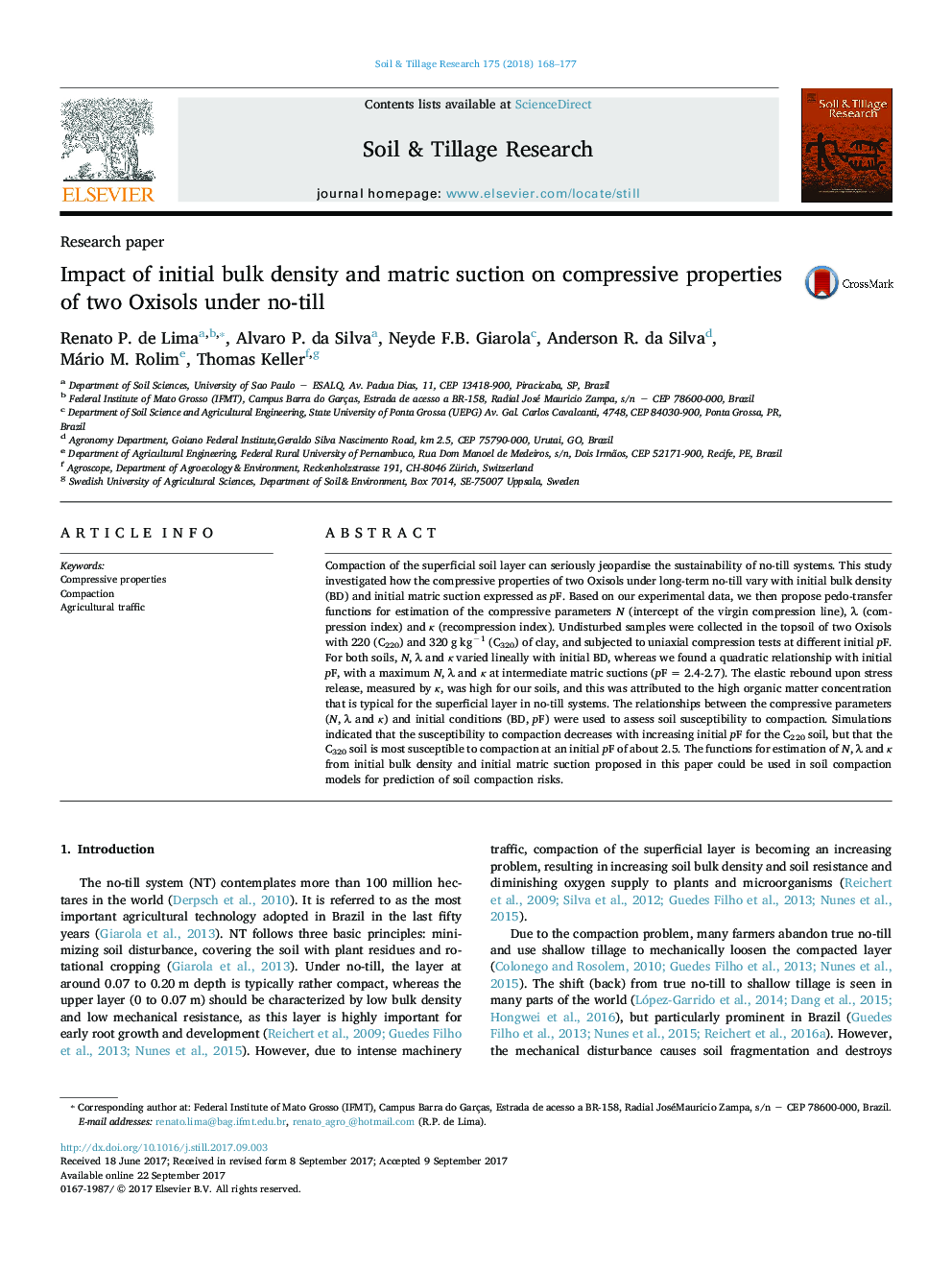| Article ID | Journal | Published Year | Pages | File Type |
|---|---|---|---|---|
| 4927431 | Soil and Tillage Research | 2018 | 10 Pages |
â¢Compressive proprieties with initial BD, pF and texture were analysed under no-till.â¢Initial BD influenced compressive proprieties lineally.â¢There is an optimal pF to compressive proprieties, which changes with the texture.â¢Optimal pF of compressive proprieties and compaction are different with the texture.â¢Organic carbon from no-till increased soil rebound.
Compaction of the superficial soil layer can seriously jeopardise the sustainability of no-till systems. This study investigated how the compressive properties of two Oxisols under long-term no-till vary with initial bulk density (BD) and initial matric suction expressed as pF. Based on our experimental data, we then propose pedo-transfer functions for estimation of the compressive parameters N (intercept of the virgin compression line), λ (compression index) and κ (recompression index). Undisturbed samples were collected in the topsoil of two Oxisols with 220 (C220) and 320 g kgâ1 (C320) of clay, and subjected to uniaxial compression tests at different initial pF. For both soils, N, λ and κ varied lineally with initial BD, whereas we found a quadratic relationship with initial pF, with a maximum N, λ and κ at intermediate matric suctions (pF = 2.4-2.7). The elastic rebound upon stress release, measured by κ, was high for our soils, and this was attributed to the high organic matter concentration that is typical for the superficial layer in no-till systems. The relationships between the compressive parameters (N, λ and κ) and initial conditions (BD, pF) were used to assess soil susceptibility to compaction. Simulations indicated that the susceptibility to compaction decreases with increasing initial pF for the C220 soil, but that the C320 soil is most susceptible to compaction at an initial pF of about 2.5. The functions for estimation of N, λ and κ from initial bulk density and initial matric suction proposed in this paper could be used in soil compaction models for prediction of soil compaction risks.
